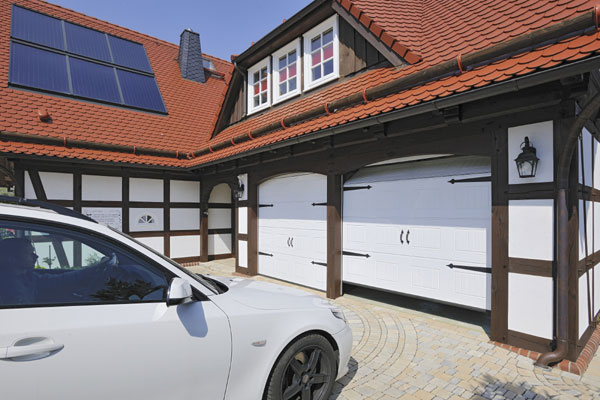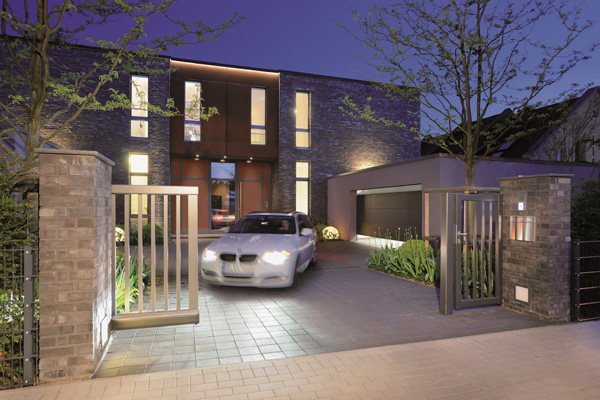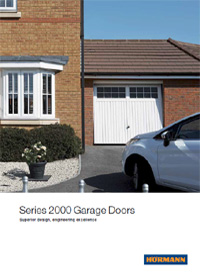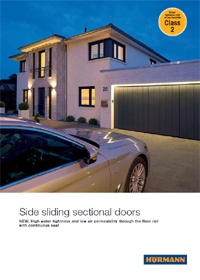Quality, Reliability & Great Value
Garage Doors Hitchin, Hertfordshire | Garage Door Repair Hitchin, Hertfordshire | Roller Shutter Garage Doors Hitchin, Hertfordshire
Don't let your Hitchin property look run down with a shabby old garage door. People often spend a small fortune on double glazing, beautiful new tiled roofs, and glorious new front doors, yet for some unexplained reason seem to ignore the old, dented and sometimes rusty garage door.
A new garage door will add to the kerb appeal of your property and add the final addition to the overall aesthetic of your Hitchin home.
A little about Hitchin
Hitchin is an exceedingly popular town in which to live and work and this view has been supported by a poll in The Times newspaper that voted Hitchin the 9th best town in the United Kingdom in which to live. Hitchin is the venue for the annual Rhythms of the World festival, which is now in its twentieth year, where well over one hundred acts performed in 2011, with acts from India, Cuba, Australia, Congo, China, Senegal, Singapore, and Germany taking part. Once the largest free festival of world music in Europe, an entry fee has been charged since 2008. It is part of the three-week Hitchin Festival which includes picnics, concerts, theatre, ghost walks, art exhibitions, comedy club, summer fetes and fireworks. There are also a number of organisations for young people in Hitchin, including air, army and sea cadets and various scouting groups.
Where is Hitchin?
Hitchin is a highly sought after market town in the North Hertfordshire district of Hertfordshire. Hitchin dates from at least the seventh century. It lies in the valley of the River Hiz, which has a 'z' that is pronounced as a 'tch' at the north-eastern end of the Chiltern Hills. It is sixteen miles north-west of the county town of Hertford, and thirty-five miles north of London.
Hitchin grew around a marketplace and the adjoining parish church of St Mary on the western banks of the River Hiz. At the southern end of the town centre is Hitchin Priory, a former monastery dating back to 1317, which was partially rebuilt into a large country house with extensive parkland following the dissolution of the monasteries. The ancient parish of Hitchin covered a large rural area as well as the town itself, including several hamlets which subsequently became separate parishes, including Langley, Preston, St Ippolyts and Walsworth.
The Hitchin economy was historically based on serving as the market town for the surrounding agricultural area, which was primarily arable with some sheep farming. Lavender has long been grown in the fields around the town, and an early industry in Hitchin was lavender distilleries.
The Great Northern Railway built its main line from London King's Cross to York through the town; Hitchin railway station opened with the line in 1850. The Cambridge line opened shortly afterwards, diverging from the main line just north of Hitchin, which therefore became an important junction station. The A1 motorway passes Hitchin a short distance to the east. The historic character and accessibility of Hitchin make it extremely popular with commuters.
History of Hitchin
Hitchin is first noted as the principal place of the Hicce people, a tribe holding three hundred hides of land as mentioned in a seventh century document, the Tribal Hidage. Hicce, or Hicca, may mean the people of the horse. The tribal name is Old English and derives from the Middle Anglian people. The ancient Icknield Way runs just north of Hitchin, passing through the neighbouring village of Ickleford. It has been suggested that Hitchin was the location of 'Clofesho', the place chosen in 673 by Theodore of Tarsus the Archbishop of Canterbury during the Synod of Hertford, the first meeting of representatives of the fledgling Christian churches of Anglo-Saxon England, to hold annual synods of the churches as Theodore attempted to consolidate and centralise Christianity in England.
By 1086 Hitchin is described as a Royal Manor in the Domesday Book: the feudal services of avera and inward, usually found in the eastern counties, especially Cambridgeshire and Hertfordshire, were due from the sokemen, but the manor of Hitchin was unique in levying inward. Evidence has been found to suggest that Hitchin was once provided with an earthen bank and ditch fortification, this would have probably been during the early tenth century, but this did not last. The modern spelling of Hitchin first appears in 1618 in the "Hertfordshire Feet of Fines".
The name of the town also is associated with the small river that runs through it, which is most attractive as it runs in front of the east end of St. Mary's Church, the town's parish church. The Hicca Way is an eight-mile walking route along the River Hiz Valley, believed to have been used for trade between the Danes and English in the Anglo-Saxon age. It is also likely that Hitch Wood, which lies some six miles south of Hitchin also derives its name from the Hicce tribe, who gave their name to Hitchin.
An unusually large church for historic Hitchin
St Mary's Church is quite large for a town the size of Hitchin and was once a minster. The size of the church is evidence of how Hitchin prospered from the wool trade. It is the largest parish church in Hertfordshire. Most of the church dates from the 15th century, with its tower dating from around 1190. During the laying of a new floor in the church in 1911, foundations of a more ancient church building were found. In form, they appear to be a basilican church of a seventh-century type, with a later enlarged chancel and transepts, perhaps added in the 10th century. This makes the church older than the story that the church was founded by Offa, king of Mercia who ruled from 757 to 796.
In 1697, Hitchin was subject to what is thought to have been the most severe hailstorm in recorded British history. Hailstones over four inches in diameter were reported to have hammered the town and its people.
The Medieval period in Hitchin
In the High Medieval Period the town was surrounded by open arable fields, divided into narrow strips, which survived into the early 19th century. Hitchin flourished on the wool trade; the sheep being pastured on the high hills to the south. By the 17th century the town was a staging post for coaches coming from London. By the middle of the 19th century, the railway had arrived, and with it a new way of life for Hitchin. Hitchin established itself as a major centre for grain trading after the Corn Exchange was built in the marketplace in 1853. Hitchin was also a centre for manufacturing products from the lavender, which was cultivated in the surrounding area, with multiple lavender distilleries operating in the town.
During the medieval period, both a priory called Newbigging, now known as The Biggin and a friary, now known as Hitchin Priory, were established, both of which closed during Henry VIII's Dissolution of the Monasteries. They were never reformed, although The Biggin was for many years used as alms-houses.
Historic education in Hitchin
The British Schools Museum in Hitchin is home to the world's only surviving complete Lancasterian Schoolroom, which was built in 1837 to instruct boys by the Lancasterian method of peer tutoring. This unique community project demonstrates the foundation of education for all.
ACE Garage Doors have had literally dozens of garage door enquiries from the Hitchen area and have many very satisfied customers in this area too. So, if you live in or around the Hitchin area and have been toying with the idea of a new garage door recently, why not contact us, we are sure to be able to supply and fit a superb new garage door.
We also cover the following areas in Hertfordshire:
- Baldock, Hertfordshire - Garage Doors | Garage Door Repair | Roller Shutter Garage Doors
- Borehamwood, Hertfordshire - Garage Doors | Garage Door Repair | Roller Shutter Garage Doors
- Broxbourne, Hertfordshire - Garage Doors | Garage Door Repair | Roller Shutter Garage Doors
- Elstree, Hertfordshire - Garage Doors | Garage Door Repair | Roller Shutter Garage Doors
- Harpenden, Hertfordshire - Garage Doors | Garage Door Repair | Roller Shutter Garage Doors
- Hertford, Hertfordshire - Garage Doors | Garage Door Repair | Roller Shutter Garage Doors
- Hoddesdon, Hertfordshire - Garage Doors | Garage Door Repair | Roller Shutter Garage Doors
- Letchworth Garden City, Hertfordshire - Garage Doors | Garage Door Repair | Roller Shutter Garage Doors
- Potters Bar, Hertfordshire - Garage Doors | Garage Door Repair | Roller Shutter Garage Doors
- Radlett, Hertfordshire - Garage Doors | Garage Door Repair | Roller Shutter Garage Doors
- Rickmansworth, Hertfordshire - Garage Doors | Garage Door Repair | Roller Shutter Garage Doors
- Royston, Hertfordshire - Garage Doors | Garage Door Repair | Roller Shutter Garage Doors
- St. Albans, Hertfordshire - Garage Doors | Garage Door Repair | Roller Shutter Garage Doors
- Stevenage, Hertfordshire - Garage Doors | Garage Door Repair | Roller Shutter Garage Doors
- Waltham Cross, Hertfordshire - Garage Doors | Garage Door Repair | Roller Shutter Garage Doors
- Watford, Hertfordshire - Garage Doors | Garage Door Repair | Roller Shutter Garage Doors
- Welwyn Garden City, Hertfordshire - Garage Doors | Garage Door Repair | Roller Shutter Garage Doors
ACE Garage Doors
For 29 years Ace has been supplying, fitting, servicing and repairing Garage Doors, with thousands of satisfied customers in Bedfordshire and all over the South East. Providing truly excellent customer service means everything to us at ACE Garage Doors, so we put our customers needs at the heart of our business and strive to provide a friendly, prompt and speedy service without compromising on quality or value.
If you are looking for high quality Garage Doors and service you can trust then contact ACE Garage Doors for a QUICK QUOTE today.

Why choose ACE Garage Doors?
- Established 29 years
- Fast and friendly service
- 10 year door guarantee
- 5 year motor guarantee
- No deposit required
- Established brands
- Award winning service

Speed
We aim to respond to enquiries the same day, and provide a rapid quote. If a FREE site survey is required we aim to get to you within 48 hours. We also have a 24/7 repairs service where one of our skilled team will attend to secure your property, or rescue your car!
Customer service
Customer satisfaction is at the forefront of everything we do. We recognise that people lead busy lives, and so we aim to be responsive to enquiries, provide realistic lead-times and do not take any payment until the job is finished and our customers are 100% satisfied.
Quality
Our team has 36 years in the industry and only work with established brands we can set our reputation against, plus
we have no sales people or middle men you will be dealing direct with the owners of the company, Darren and Simon.
Read our story here.
Expertise
ACE Garage Doors offer a full fitting and repair service carried out by our professionally qualified team. From the replacement of individual parts through to a full renovation of your garage, ACE Garage Doors are experts in our field with many years of experience to draw on.

Garage door services
- Extensive range of doors
- All doors fitted by experts
- FREE quotes
- Automated operation
- Full servicing and repairs
- 24/7 call out available

Garage door types
- Electric roller shutters
- Sectional garage doors
- Remote controlled doors
- Insulated garage doors
- Canopy / up & over doors
- Side hinged garage doors


Professional team
- Proud of our reputation
- Fully qualified team
- Over 30 years' experience
- Regularly recommended
- Covid safe services
- Support local football clubs

Areas covered
- Hertfordshire
- Bedfordshire
- Buckinghamshire
- Cambridgeshire
- Essex
- North London

Pricing
We offer extremely competitive pricing by keeping our overheads low, buying in bulk and then passing the savings onto our customers. We have a reputation for providing great value and as a result, we frequently get referred to our customers' families, friends and neighbours.
Industry leading warranties
We offer 10 year warranties for all our up and over and roller doors and frames, and an industry leading 5 year warranties on all our tubular motors, such is our confidence in the quality of our work and components. We also offer 2 year warranties on parts and labour for garage door repairs.
Eco-friendly
As a company we are extremely environmentally aware, and all waste materials, from your old door to the packaging materials for the new product are taken for recycling at our own cost. So by choosing ACE Garage Doors you can be reassured that you are also playing your part to protect the environment.
Easy to follow ordering process
During the FREE SURVEY precise measurements will be taken and your needs matched against a wide range of products from leading manufacturers with whom we deal direct. We will discuss the various materials and finishes available, as well as any optional extra features you might have requested such as glazing and automation.
We can provide doors in almost any colour you can imagine, so provide us with a specific RAL colour or ask us about our colour matching service and we will find it for you! We will inform you of the price fully inclusive of VAT, and if an insurance claim is being made we are happy to provide a written quotation. We don't charge you to take your door away, and it will be recycled for you. Simple.
Selection of garage doors available from ACE Garage Doors
Garage doors supplied, fitted, serviced and repaired in Bedfordshire
Bedfordshire has many splendid homes that would benefit from a new garage door. It is of course the first thing visitors will see as they approach your house. Don't worry about the style of garage door you would like, we have many to choose from.
Security is also a major consideration, particularly when you consider that a car is probably the second most expensive thing you will ever own. We specialise in the latest and very finest and well built secure garage doors.
ACE Garage Doors will be delighted to advise you on the style of garage door that would go well with your property. From a plain white garage door through to a lovely panneled one, we can help you achieve the look you desire. If you live in or near to Bedfordshire and are looking for a new garage door, we are here to help you with every aspect of your home improvement project, offering only the best help and advice.
The southern end of Bedfordshire is part of a chalk ridge known as the Chiltern Hills. The remainder forms part of the broad drainage basin of the River Great Ouse and its tributaries. Most of Bedfordshire's rocks are clays and sandstones from the Jurassic and Cretaceous periods, with a small amount of limestone. Local clay has been used for making bricks. Glacial erosion of chalk has left the hard flint nodules deposited as gravel. This has been commercially extracted in the past at pits which are now lakes, Priory Country Park, Wyboston and Felmersham provide good local fishing.
Get a QUICK QUOTE or request more information
If you would like a QUICK QUOTE then please contact us on 01438 742 664 or email us at info@ace-garage-doors.co.uk and we will be in touch shortly.
Further information:
- Sectional Garage Doors in Herts, Beds, Bucks, Essex and North London
- ace-garage-doors.co.uk
- Roller Shutter Garage Doors in Stevenage, Hertfordshire
- Garage Doors in Broxbourne, Hertfordshire
- Garage Doors in Epping, Essex
- Garage Door repair in Barnet, London
- Garage Door repair in Biggleswade, Bedfordshire
- Garage Doors in Harpenden, Hertfordshire
- Garage Doors in Hertford, Hertfordshire
- Garage Doors in Hitchin, Hertfordshire
- Garage Doors in Hoddesdon, Hertfordshire
- Hormann Garage Doors in Stevenage, Hertfordshire
- Hormann Sectional Garage Doors in Stevenage, Hertfordshire
- Hormann Sectional Garage Door repair in Stevenage, Hertfordshire
- Hormann Sectional Garage Doors in Stevenage, Hertfordshire
- Garage Doors in Letchworth, Hertfordshire
- Garage Doors in Potters Bar, Hertfordshire
- Garage Doors in Royston, Hertfordshire
- Garage Doors in St Albans, Hertfordshire
- Garage Doors in Welwyn Garden City, Hertfordshire
Hertfordshire
Bedfordshire
Buckinghamshire
Cambridgeshire
Essex
North London
Areas covered :: Articles :: Privacy policy :: Vacancies :: Website map


























